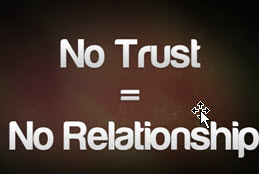If you missed Part I of this article, please stop now and read it HERE before continuing…
 Let me first share this short yarn about “trust” and then I’ll get back into this important topic and discuss the final two types of objections.
Let me first share this short yarn about “trust” and then I’ll get back into this important topic and discuss the final two types of objections.
Years ago a fellow named Parker was traveling through South Alabama on one of those typically hot, humid Deep South summer days. So he stopped at a watermelon stand, picked one out, and asked the farmer how much it cost. “It’s $1.10,” he replied. Parker only had a bill in his pocket and said, “All I have is a dollar.”
“That’s ok,” the farmer said, “I’ll trust you for it.”
“Well, that’s mighty nice of you,” Parker responded, and picking up the watermelon, started to leave.
“Hey, where are you going?” the man behind the counter demanded.
“I’m going outside to eat my watermelon.” “But you forgot to give me the dollar, barked the farmer!”
“You said you would trust me for it,” Parker called back.
“Yeah, but I meant I would trust you for the dime!”
Parker replied, “You weren’t trusting me at all. You were just taking a ten-cent gamble on my integrity!”
No Trust
The dictionary defines TRUST as a “firm belief in the reliability, truth, ability, or strength of someone.”
- So according to that definition, in order to establish belief with buyers, consider sharing a couple testimonials from others who have experienced the results of what you do. They know you think you’re trustworthy, so let your clients sell you to the untrusting prospect. By the way, video testimonials ROCK!
- Why not try being genuine and showing interest.Relax, smile, and project a positive attitude. Ask questions that show interest in the prospect, first as a person, because people trust people they like.
- Learn to become a good storyteller by sharing how you’ve helped other businesses and homeowners, because stories like this will demonstrate what they need to hear for trust to sprout; followed by outcomes and results you will like.
 No ($) Money
No ($) Money
The “I/we don’t have money to do this” type objections are as regular as rainfall, both in residential and business settings. The primary principle to remember is that people will always find the money for something they really want.
- Since ‘no money’ responses often are smokescreens for non-money concerns, consider responding (after listening carefully to what they say) with, “If money were no object, what would your ideal solution look like?” This should help isolate situations where money truly is the concern, but my guess is that won’t be very often. Once you identify the actual concern, handle it as you would any other objection.
- Try shrinking your offering rather than your price. Ask your buyer which components of your solution he/she would like to remove in order to match their budget. If they really want all you are proposing, this is just a deal check and they will find a way to pay for it. If it truly is a budget issue, by proposing several “packages” (Good-Better-Best, or Silver-Gold-Platinum) they can opt to downgrade, but regardless, if they want your solution you won’t lose the sale.
- Make sure you’re talking to the person(s) with the power of the pen. For commercial selling this needs to be established on your initial visit by simply asking your point of contact, “Who else, other than yourself has a role in the decision making at your firm.” Either he/she will disqualify themselves and point you toward the right person, or answer your question and include the additional decision maker(s) in the meeting.
In a residential setting it might sound like, “I’m a homeowner too, and when I am considering an important decision concerning my house I always schedule a time when my wife and I can meet jointly with the vendor, so that we will both hear what is said and then make an intelligent decision. Assuming you make decisions in a similar manner, let’s schedule our meeting at a time when all three of us can meet, fair enough?”
By understanding and confronting these four generic types of objections you will become more competent and confident and close more business. As I stated at the beginning of this post, when you are in the act of selling, think NUT$.
————Kudos for SINAFLW————
Alan from Chattanooga recently commented, “I selected this book hoping to gain some real sales inspiration. I found that, while not feeling like I was reading a text book. This book is practical, amusing, relevant, and an outright great read! I am already applying some of the ideas and techniques which were so uniquely laid out by Doug, the author.” Look for yourself.
————————————————————
©2017 Robinson Training Solutions, LLC


